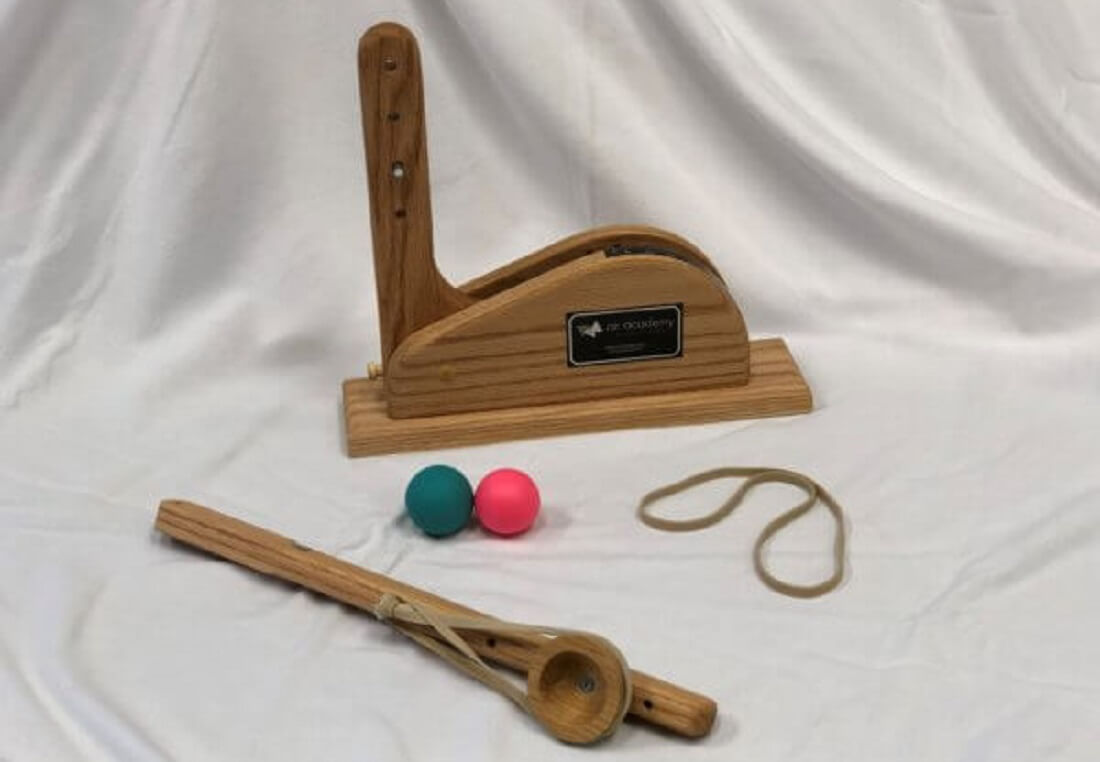
The Official Statapult® Catapult is used by hundreds of companies and universities for designed experiments, control charts, basic statistics, statistical process control, and cause and effect training. It is great for team exercises and for applying statistical methods to real problems. It makes training fun! It comes with an e-version pamphlet of suggestions for classroom use.
Features:
- Lean Six Sigma training kit
- Catapult design includes: launcher, rubber bands, foam smash balls and Six Sigma/DOE exercise instructions
- Supports up to seven factors at two or more levels for experimental design
- Supports both continuous and categorical factors
- Robust designs can be practised using ball type as a noise factor
- Can be used to teach Variance reduction through process flow and cause and effect diagrams with CNX
- Can be used for hypothesis testing, multiple regression modelling, and control charting
- With the double cup launcher, can be used to measure gage capability
- Extremely powerful for teaching design of experiments (DOE)
- Helps make the learning experience interactive and fun!
- Demonstrates the importance of good standard work and the power of reducing variation
- Provides hands-on practice experimenting with many factors
- Teaches how to model and predict performance, optimize for various objectives (hitting a target distance, etc.), and validate the results
- Teaches the principles of robust design (with different launchers, lot-to-lot variation with Statapult® balls, etc.)
- Promotes problem-solving in a team environment
- Collects real-time data for teaching basic statistical concepts and analysis of data
Download the Statapult® Catapult User Guide
Statapult® Catapult is a registered trademark of Air Academy Associates.
FAQS
Related topics:
catapult, stratapult, katapult, six sigma zone, basic statistical tools, statistics tools, statapult, catapult learning, catapult health, catapult software, stratapult, catapult six sigma, sigmazone, catapult, catapult doe, virtual catapult simulator, pult catapult, statapult catapult, statapult six sigma, catapult exercise, catapult exercise six sigma, six sigma catapult case study, six sigma catapult instructions, six sigma catapult simulation, statapult experiment, statapult solution, statistics catapult, six sigma katapult, statapults
Tags:
catapult six sigma, sigmazone catapult, six sigma catapult, statapult exercise instructions, statapult experiment, statapult simulation, six sigma catapulta, six sigma katapult, statapult six sigma, statapults, six sigma catapult case study, six sigma catapult instructions, statistics catapult, six sigma catapult simulation, catapult exercise six sigma, statapult solution, design of experiments catapult exercise, catapult exercise


